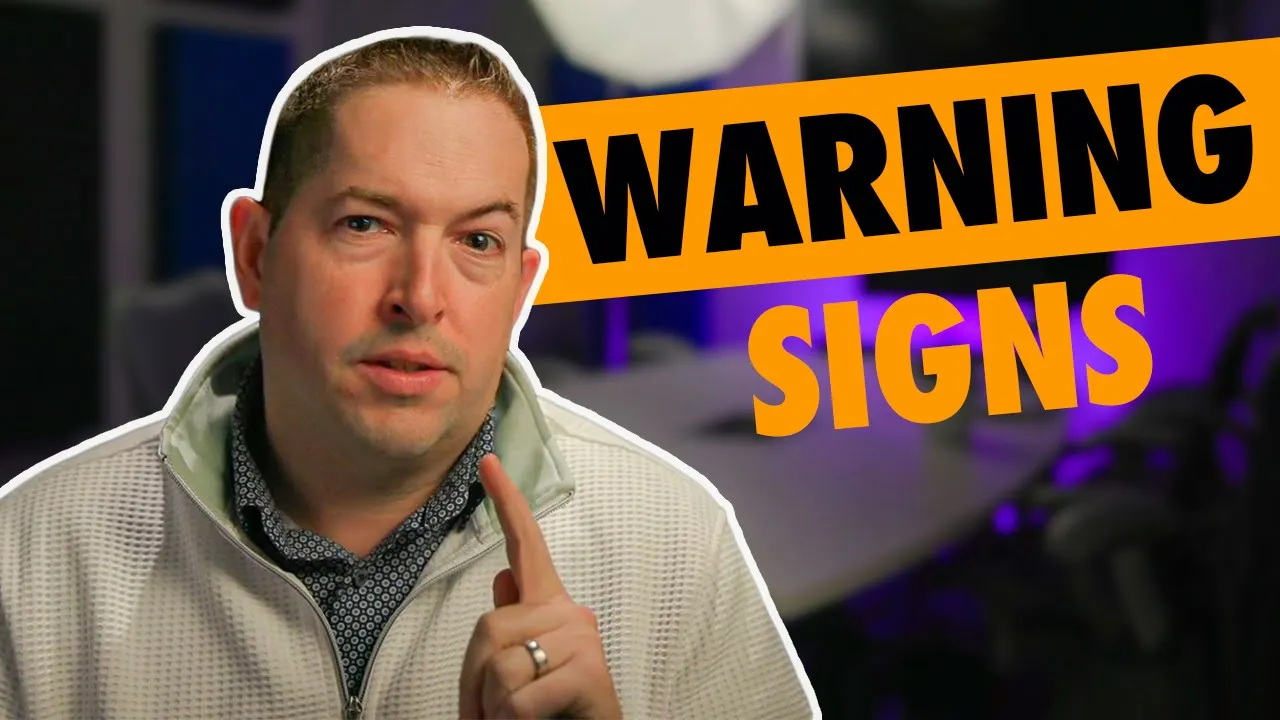Recognize and Act on The Four Customer Warning Signs!

In the fast-paced world of distribution sales, skillfully reading and responding to customers’ signals is how you achieve sustained growth and success. It’s about catching those subtle, and sometimes not-so-subtle, hints that signal a need for change. This guide dives into four critical warning signs that, if addressed early enough, will ensure your business not only survives in today’s competitive landscape, but thrives. Let’s jump in…
The Four Warning Signs
1. Decline in Customer Sales
- The Situation: You’re seeing a steady drop in sales. It’s that uncomfortable trend where customers seem to be pulling back, spending less, and maybe even looking elsewhere.
- Why You’re in the Situation: Often, it boils down to us not reaching out to our customers enough or only contacting them when we need something. We’re not keeping pace with market trends and pricing adjustments. Our customers notice when we’re not in sync, and it affects their spending habits.
- How to Avoid the Situation:
- Keep your finger on the pulse of market trends and actively solicit customer feedback. Ensure your offerings are not just relevant but also competitively priced.
- Make communication a two-way street. Don’t just reach out with sales pitches; offer value, insights, and check-ins that reinforce how much you value their partnership.
- What to Do If You’re in the Situation: Reconnect with your customers with a genuine interest in their needs and challenges. It’s time to reassess your pricing strategy to ensure it reflects the true value you provide, making adjustments that align with current market expectations.
2. Decline in Customer Account Numbers
- The Situation: Your roster of active customer accounts is dwindling. They’re either drifting to competitors or just fading away.
- Why You’re in the Situation: This happens when we don’t nurture our existing relationships as intentionally as we should, when we’re slow to adapt to their changing needs, or when we don’t actively seek new customers (if you’re not growing, you’re dying).
- How to Avoid the Situation:
- Crafting a robust strategy for customer engagement and retention is crucial. Developing new territories can inject fresh energy into your customer base.
- Introduce programs that celebrate customer loyalty and actively pursue new leads with targeted marketing that speaks directly to their needs and how you can meet them.
- What to Do If You’re in the Situation: Take a deep dive into why customers are leaving by asking for their feedback. Use this information as part of a feedback loop to refine your approach, focusing on personalized engagement and broadening your appeal to new markets.
3. Shrinking Product Menu
- The Situation: Customers are focusing on a narrower range of products from your portfolio, signaling a shift in their purchasing behavior that could drive them toward competitors with more diverse offerings.
- Why You’re in the Situation: Sometimes this happens when you don’t stay ahead of market shifts or customer preferences. Other times it’s a supply chain hiccup or a disconnect between what we’re offering and what the market demands.
- How to Avoid the Situation:
- Continuous market analysis and customer feedback are your best friends here. They guide your inventory and product development strategies, ensuring you’re always a step ahead.
- Be proactive in diversifying your offerings. Listen to what your customers are asking for and be willing to explore new product lines that can meet their evolving needs.
- What to Do If You’re in the Situation: Reevaluate your product strategy and inventory management. Consider collaborating with new suppliers or partners to widen your product offerings. Act swiftly on customer feedback to realign your product range with their current preferences.
4. Dropping Profitability
- The Situation: You’re managing to keep sales volume up, but your profit margins are thinning. It’s a clear sign that costs are creeping up, pricing strategies may be outdated, or the value proposition is not hitting the mark.
- Why You’re in the Situation: This scenario often unfolds from a combination of increasing competition, rising operational costs not matched by pricing, and inefficiencies that need rooting out.
- How to Avoid the Situation:
- A rigorous review of your cost structures and operational efficiencies is in order. Pricing strategies should be dynamic, reflecting the value delivered and keeping pace with market conditions.
- Seek ways to streamline operations to cut excess costs, and consider revisiting your pricing models to ensure they align with the value perceived by your customers.
- What to Do If You’re in the Situation: Undertake a comprehensive
audit of your operations to identify cost-saving measures. Reassess your value proposition to customers, ensuring your pricing strategy is competitive and reflective of the quality and service you deliver.
It took us nearly two decades of trial-and-error (lots of error) to recognize these patterns and identify these warning signs. Maybe you’ve seen or experienced them already. It’s important to realize that to have one of these come your way, or to be in the thick of one right now, doesn’t mean you did something wrong or aren’t managing your business well. Think of each as an opportunity for improvement. From reigniting customer interest to refining your value proposition, it’s all about being intentional in your actions and responsive to the market. Armed with these strategies, you’re now ready to navigate towards greater growth, profitability, and customer loyalty.





